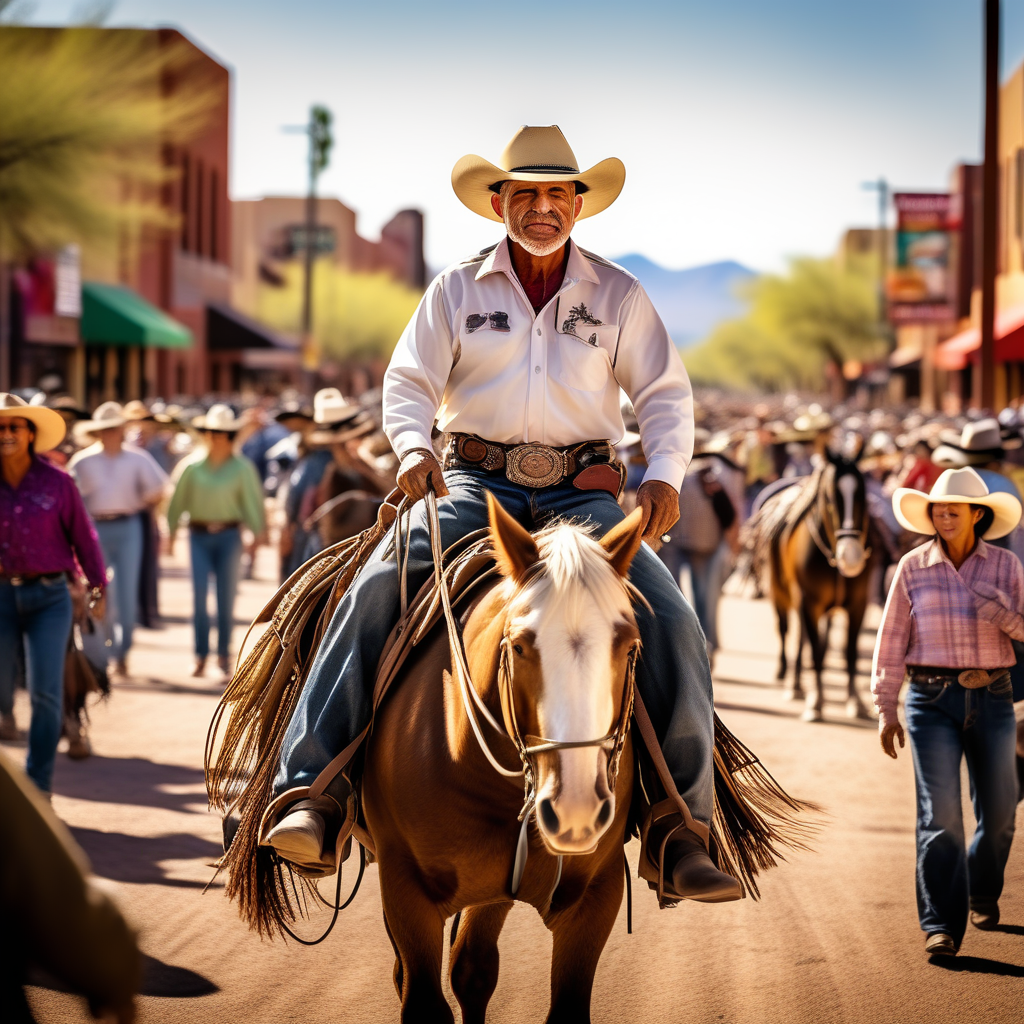La Fiesta de los Vaqueros, also known as The Celebration of Cowboys, is a longstanding tradition in Tucson, now entering its 99th year. Established in 1925, this nine-day event is Southern Arizona’s oldest and most celebrated heritage event. Let’s delve into the details and explore the various activities that make this celebration a significant part of the local culture.
The Tucson Rodeo Parade: A Spectacle of Tradition
The heart of La Fiesta de los Vaqueros is the Tucson Rodeo Parade, a 2.5-mile extravaganza that captures the essence of cowboy culture. First introduced in 1925, this parade is the world’s longest non-motorized parade, attracting over 200,000 viewers annually. Positioned at the corner of South Sixth Avenue and Irvington, attendees get a front-row seat to witness the vibrant display of floats, celebrities, and local residents coming together to celebrate the diverse cultures of Southern Arizona.
Immersive Experiences at the Parade
Having attended this grand event, we can attest to the immersive experience it offers. From engaging with local residents to exchanging stories with fellow attendees, the parade becomes a lively gathering. Movie stars often grace the event, adding glamour to the festivities. The lively atmosphere, coupled with incredible floats and healthy junk food options, makes the Tucson Rodeo Parade a truly fantastic celebration of the region’s rich cultural tapestry.
The Annual Tucson Rodeo: A Five-Day Extravaganza
The main highlight of La Fiesta de los Vaqueros is the annual rodeo held at the Tucson Rodeo Arena. Featuring various events like bareback riding, steer wrestling, saddle bronc riding, and more, this rodeo draws a crowd of at least 50,000 fans during its five-day run. The arena, with a seating capacity of 11,000, transforms into a spirited space where attendees, adorned in cowgirl hats, partake in the excitement of cheering, yelling, and celebrating the cowboy spirit.
A Promise to Return
Having participated in the rodeo on multiple occasions, we can vouch for its exhilarating and sometimes thrilling nature. The camaraderie among fans, the thrill of the events, and the promise to return make the Tucson Rodeo an integral part of La Fiesta de los Vaqueros.
The Tucson Rodeo Parade Museum: A Journey Through History
Beyond the lively events, the Tucson Rodeo Parade Museum offers a glimpse into the rich history of cowboy and rodeo culture. Open to the public from January to early April, the museum showcases over 100 horse-drawn wagons, carriages, and buggies. Movie enthusiasts can explore the fringe-top surrey used in the filming of “Oklahoma” in Sonoita (1953). Additionally, visitors can step into the first Tucson airport hangar dating back to 1900 and marvel at Louise Serpa’s Cowboy Hall of Fame photographs.
Exploring Tucson’s Cowboy and Rodeo History
For those passionate about history, the museum provides an immersive experience, allowing guests to delve into Tucson’s cowboy and rodeo legacy. From vintage carriages to historic photographs, it’s a site that enriches one’s understanding of the cultural roots embedded in La Fiesta de los Vaqueros.
Unveiling Tucson’s Cowboy Heritage
La Fiesta de los Vaqueros stands as a testament to Tucson’s deep-rooted cowboy heritage. From the iconic parade to the adrenaline-pumping rodeo and the enlightening museum, this celebration honors the diverse cultures that have shaped Southern Arizona. As the 99th year unfolds, it’s a reminder of the enduring spirit of La Fiesta de los Vaqueros.








Leave a Reply